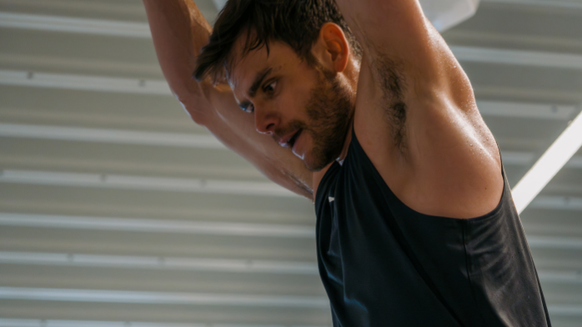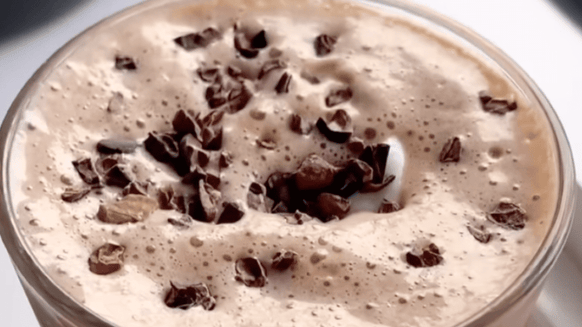 The world of fitness is a minefield most of the time and as women, it can also feel intimidating and overwhelming. Well don’t worry we are here to help you sieve through the myths and find the hard facts when it comes to training, nutrition and just feeling good and comfortable when training. We’re going to bust the top 12 myths that face us as women within this industry and help you feel confident and ready to take on anything...
The world of fitness is a minefield most of the time and as women, it can also feel intimidating and overwhelming. Well don’t worry we are here to help you sieve through the myths and find the hard facts when it comes to training, nutrition and just feeling good and comfortable when training. We’re going to bust the top 12 myths that face us as women within this industry and help you feel confident and ready to take on anything...Myth 1: Weightlifting and strength training will make you bulky
Fact: Bulking is a very deliberate and time-consuming activity, which requires immense dedication
Ok so bulking or the phase in which you are aiming to put on size in order to gain more muscle, this phase is a very deliberate choice and comes from lifting and eating in a surplus of calories (more calories than you need for maintenance). It can take weeks if not months to build muscle mass, ask any pro bodybuilder and they'll tell you how hard it is to gain size, they spend months and years working tirelessly to get to the size they are, it didn’t happen overnight. Fact: Lifting and strength training are great for your physical and mental health
Whether you’re trying to cut fat, get stronger, or build tone and definition, strength training is for you. There is a long list of benefits that strength/weight training has for women no matter their goals, for example, if you are looking for fat loss a heavy round of strength training leads to high consumption of oxygen which requires more caloric expenditure and leads to more calories burned and greater fat loss.It’s also great for stress relief and increased energy levels. Exercise in general releases endorphins that make you feel good. It is also found that people who strength train regularly tend to manage stress better. Weight/strength training also improves the overall quality of your sleep during the night which means you feel more rested when going into the next day. Strength training is known for helping you to reduce your risk of heart disease and lowering bad cholesterol and increasing good cholesterol, and in turn, this will help to lower blood pressure and help you as you age, to reduce the risk of losing both bone and muscle mass. Not to mention strength training helps to strengthen your muscle and increase your bone density but reduces the risk of injury.
Myth 2: You have to do lots of cardio to lose weight
Fact: Strength training is more effective for weight loss than cardio
Strength training is a great way to lose fat. It's proven that a heavy round of strength training leads to high consumption of oxygen in both the hours to days after that training session. When your body uses more oxygen it requires a higher caloric expenditure and this increases your metabolic rate which means more calories burned and leads to greater fat loss. Don’t forget the more muscle on your body overall means everyday contractions contributes to a higher rate of caloric burn. Once you then add in more movement during the day you’ll be hitting your goals in no time.Fact: Cardio can still support your weight loss goals
Cardio still has its role and if you enjoy training this way you should continue to do so. Striking a balance of all training methods will have you enjoying your training and hitting your goals. Cardiovascular training is a great way to get your body’s muscles to work and adapt not to mention your cardiovascular fitness level will improve as well as your muscular performance, with a mixture of LISS and HIIT you will be more efficient at supplying oxygen and nutrient-rich blood around the body to support your performance and recovery.Myth 3: You should not eat before cardio
Fact: Food is an important fuel for your workouts
Food is fuel and you wouldn’t expect your car to run at peak performance if you didn’t fill up the petrol tank, would you? Our bodies are the same, in order to perform how we want them to we need to make sure we are fuelling them correctly. We need to make sure that we are providing our bodies with the necessary nutrients to power, repair and sustain our optimal health when training, recovering and just going about our day today. A lot of people don’t like to work out straight after eating which makes sense you fill full but it doesn’t mean they shouldn’t be fuelling themselves. The timing of pre-training meals can be varied based on the food you eat, so no matter who you are there is an optimal time to ensure you are fuelled efficiently for your workouts. Ideally, you want to have a good carb and protein-based meal 90-60mins out of your session however if you don’t have the time finish a simpler carb and protein source (protein shake for example) an be taken 40-30 mins prior. Myth 4: You should do cardio before strength training
Fact: You can prioritise strength training if you prefer
With any training, it comes down to personal preference and what your goals are but a general rule is to prioritise strength training over cardio in your session. If you prefer to do your cardio first it does give you a slightly higher calorie burn over the course of the session due to having an elevated heart rate. This increases the metabolic demands placed on your body, however, the likelihood is you'll be more tired after doing cardio, and won't have the fuel or energy needed to spend on strength training, which is better for making lasting body changes.By training cardio last and doing your strength training at the beginning allows you to get to the fat-burning portion of the workout faster since the aerobic system is much more efficient in terms of generating ATP. This means the majority of your energy can be focused on weight training and getting better results in your strength and physique. Strength training will deplete your glycogen so when you finish with your cardio it will result in a much higher percentage of fat being burned as fuel.The con is that the last thing you want to do after a hard weightlifting session is then push through a cardio session which can be very challenging for a lot of people.
Myth 5: Fasted cardio is the best cardio
Fact: Fasted and non-fasted cardio both play a role in fitness
Fasted cardio is a training method when one performs a cardio workout without eating a meal or snack first for at least the past 6-10 hours prior. The majority of the time fasted cardio will be performed first thing in the morning, and while some individuals swear by it for fat loss, others find it difficult. Our body’s first choice of fuel is carbohydrates, and once we consume these our muscles get pumped full of glucose which they use for energy. When performing intense cardio sessions our burned through the available glucose from the food and then start to burn stored glycogen in our muscles. When we burn more calories than we consume this leads to weight loss which is why cardio tends to be a go-to for most people who are trying to lose a few pounds.Fasted cardio is based on the idea of targeting fat to burn instead of carbs as the body’s preferred energy source. This is done when glucose isn’t readily available in the body (after being fasted), which results in the body starting to break down stored fat for energy instead.There are pros and cons to fasted cardio and you have to make sure it works for you and your lifestyle, a good mixture of both normal and fasted may be an easier way to manage your training. Yes, it’s great for fat burning, but you have to get the ideal conditions which include having no recently ingested glucose (no food in the last 6-10 hours) and not working at an intensity high enough to damage/break down muscle tissue if you don’t have the time to wait make sure to have a good pre-work meal and give yourself an intense Hiit cardio session to burn the calories and continue metabolic rate throughout the rest of the day. Not an early riser? Well, then there is no better benefit of fasted cardio than the fact that you eliminate the time it takes to consider fueling for your workout just head straight off to your workout and worry about the nutrition after, again if you like to get up earlier and take your time, typically, you want to wait about 30 minutes after eating to start working out, so if that's your thing sit down to enjoy your breakfast and smash the workout after. Fasted cardio is relatively safe for most people to perform a low to moderate intensity cardio workout.“Active recovery” or light cardio days are good opportunities for trying fasted cardio. However, if you want to attack high-intensity interval training or long-distance cardio, it’s best to be properly fuelled. Research has shown that proper pre-workout nutrition is key to optimising your performance for activities like weightlifting and other high-intensity, short-duration exercise.Remember however you choose to do your cardio, a daily calorie deficit is a key to burning fat and losing weight. It never hurts to try a few days of low-intensity morning workouts without eating beforehand, but make sure that you are not overeating to compensate for your workout.
Myth 6: Machines are better than free weights
Fact: Machines and free weights both play a role in strength training
The most important point when it comes to strength training is feeling confident and safe in your form. If you’re new to strength training or working out alone machines can be a great way to learn movements or feel safer when lifting. Machines are also great as a choice over free weights when rehabbing an injury as they provide a more controlled motion and specifically isolate certain muscle groups and allow you to clearly track progress while increasing weight without worrying about form. However free weights are very important within strength training as they promote quicker strength gains than machines. Free weight training requires balance and coordination which recruit more muscle groups and more muscle fibres than machines, as well as allowing people to move in more natural plains of movement for their body mechanics. It’s always good to have a mix of both free weights and machines in order to get the most from your body in both strength and joint stability, you also need to make sure you use the equipment that suits you and your training goals and feel safe.
Myth 7: Strength training is dangerous
Fact: It’s important to be confident and safe when performing any type of training.
When starting out strength training can be intimidating and scary but as with any training there can be risks when you’re asking your body to perform to lift over your own body weight BUT this doesn't happen overnight and it takes time and patience to learn and build confidence and strength to hit big weights. For the majority of people, weightlifting is a safe and healthy thing to do. As with any training, it is safe as long as you are doing it with proper form and correct load. Strength training is about learning and knowing what your limit is and making sure to leave any ego at the door. Start by learning the correct techniques and form and slowly add load/resistance as you get stronger, injuries happen when people try to cheat and overload their body when lifting with bad form. Everyone was a beginner once so don’t be scared to take a few PT or lifting classes to learn the basic movements even if it's just with your bodyweight. Myth 8: High-intensity interval training (HIIT) is the best way to burn fat
Fact: HIIT is a great way to burn more calories and fat
HIIT training is great cardio and a go-to for people who are looking to lose weight as you tend to burn more calories during a HIIT workout than steady-state cardio, but it’s more down to it stimulating the production of your human growth hormone (HGH) during the 24 hours after you finish your workout. This means burning more fat and calories in the 24 hours after your workout than you do after.HIIT is also a great way of getting a good workout in if you’re limited on time too. You can achieve more progress in 15 minutes of interval training three times a week than jogging on the treadmill for an hour.Fact: LISS has its place in any training program
LISS cardio has many health benefits such as improving blood flow, reducing stress, and improving brain function. It also has a role to play in fat loss by improving your body’s ability to use fat as fuel instead of tapping into glycogen stored in your muscles especially if you layer in fasted cardio. LISS is also great for those that can’t perform higher intensity workouts, are recovering from injury, or want an ‘active recovery’ day. Both forms of cardio will help with fat loss as long as the person is eating in a calorie deficit and ensuring to layer a mixture of strength and cardio training into their program. Myth 9: You can spot reduce fat
Fact: People burn fat systemically from their whole body when exercising
I’m sorry to say that spot reduction is an outdated concept and achievable no matter how many sit-ups or tricep extensions you do. In order for someone to lose fat, they have to burn more calories than they consume, this is a calorie deficit and it is the best and only way to reduce fat and lose weight. When in a calorie deficit your body uses the energy stored in your cells in the form of fat to fuel itself and this then leads to your body potential getting smaller or leaner as it holds less stored fat.
However, your body doesn't draw energy from the cells in the area you're working. It gets energy systemically from your body as a whole, which means doing 1000 crunches a day won't have you removing fat from your stomach but will increase core strength and help you when performing larger compound movements which in turn burn more calories and lead to great fat loss over time. It’s time to let go of the spot reduction myth. Focus on implementing good nutrition and holistic training to strengthen and build your entire body and the results will come.
Myth 10: You’re too old to lift weights
Fact: Older people benefit hugely from resistance exercises
I truly believe you’re never too old to try anything and that goes for strength training too. As we age our metabolism slows, our bones lose density and we lose muscle mass, so making sure to strength train even as an older adult means you can slow or delay these natural processes and keep yourself feeling healthier and fitter for longer in life. Strength training can increase bone density and reduce the risks of breaks, it also promotes muscle growth which leads to stronger and improved functional movement and helps to maintain good body composition. Ensuring you learn the correct form and load for your body there’s no time like the present to get in a gym and start strength training.
Myth 11: You can only get a good workout at the gym
Fact: The world is your gym
If the past 12 months has taught us anything it's you don’t need a gym to get fit, build muscle and reach your goals. Yes, we all miss the squat rack from time to time but you can push your body to its limits with bodyweight exercises at home or out and about. Making sure to implement a variety of workout styles such as Hiit, LISS, callisthenics and resistance band training you can formulate workouts that will have you breathing hard and feeling DOMs in ways you didn’t know you could.
Myth 12: You should be sore after every workout
Fact: DOM’s are part and parcel of training and progression
Most people have experienced DOMs whether as a beginner, getting back into training or after an intense event or session. It's a natural response from your muscles as a result of small tears in the muscle fibres following a workout and usually hits you the hardest around 24-48 hours post-exercise. The tears are a result of the overload either from the strenuous lifting or a new movement pattern your body hasn’t used before.Fact: Not feeling sore doesn’t mean it wasn’t a good workout
A Lot of people believe that if they don't experience DOMs it’s not a tough enough workout but this isn’t always the case, everyone reacts differently to exercise and some people will experience soreness while others won't. Soreness or lack of should not be used to measure the effectiveness of your workout.As you continue to train your body will become more proficient and with a good routine, the degree of DOMS or soreness will naturally decrease. There is a need to ensure you don’t plateau and that is why progressive overload is needed to continue to have you building strength and muscle however your body can become more adept at recovering and you will naturally experience soreness less often. Amy has a BSHons in psychology where she was a sports scholar, as a sportswoman for over 18 years playing rugby and netball up to a national level.
She is a level 3 qualified personal trainer with a diploma in sports and exercise nutrition. She has been training in a gym and weightlifting for over 13 years, participating in CrossFit, Bodybuilding and many other events such as hyrox, triathlons and marathons.
She has a passion for extending her learning through latest studies and with a great passion for getting more women into fitness.
Amy has created programs as a coach for the last 4 years as well as around sport and fitness for Red Bull, Hyrox, Spartan UK, as well as Mental Movement UK around how fitness can help improve your mental health.
She is also a advocate for female confidence and being awareness to mental health and body confidence. She can be found here – https://www.instagram.com/dreams_and_dumbbells/?hl=en









